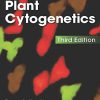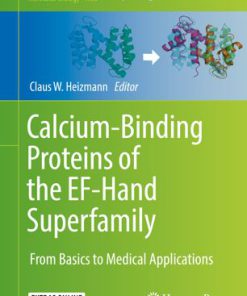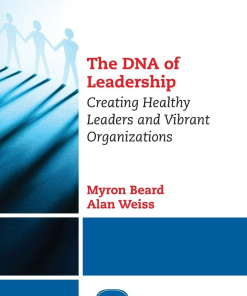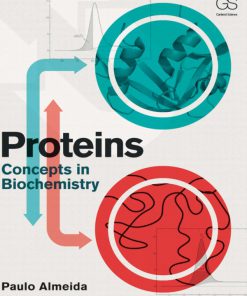Dynamics and Mechanism of DNA Bending Proteins in Binding Site Recognition 1st Edition by Yogambigai Velmurugu 9783319451282 3319451286
$50.00 Original price was: $50.00.$25.00Current price is: $25.00.
Dynamics and Mechanism of DNA Bending Proteins in Binding Site Recognition 1st Edition by Yogambigai Velmurugu – Ebook PDF Instant Download/Delivery:9783319451282 ,3319451286
Full download Dynamics and Mechanism of DNA Bending Proteins in Binding Site Recognition 1st Edition after payment
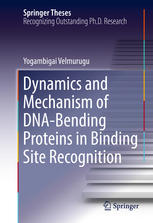
Product details:
ISBN 10:3319451286
ISBN 13:9783319451282
Author:Yogambigai Velmurugu
Using a novel approach that combines high temporal resolution of the laser T-jump technique with unique sets of fluorescent probes, this study unveils previously unresolved DNA dynamics during search and recognition by an architectural DNA bending protein and two DNA damage recognition proteins. Many cellular processes involve special proteins that bind to specific DNA sites with high affinity. How these proteins recognize their sites while rapidly searching amidst ~3 billion nonspecific sites in genomic DNA remains an outstanding puzzle. Structural studies show that proteins severely deform DNA at specific sites and indicate that DNA deformability is a key factor in site-specific recognition. However, the dynamics of DNA deformations have been difficult to capture, thus obscuring our understanding of recognition mechanisms. The experiments presented in this thesis uncover, for the first time, rapid (~100-500 microseconds) DNA unwinding/bending attributed to nonspecific interrogation, prior to slower (~5-50 milliseconds) DNA kinking/bending/nucleotide-flipping during recognition. These results help illuminate how a searching protein interrogates DNA deformability and eventually “stumbles” upon its target site. Submillisecond interrogation may promote preferential stalling of the rapidly scanning protein at cognate sites, thus enabling site-recognition. Such multi-step search-interrogation-recognition processes through dynamic conformational changes may well be common to the recognition mechanisms for diverse DNA-binding proteins.
Dynamics and Mechanism of DNA Bending Proteins in Binding Site Recognition 1st Table of contents:
Chapter 1: Introduction
1.1 Protein-DNA Interactions
1.2 Sequence-Dependent DNA Deformability and Its Role in Target Recognition
1.2.1 Free Energy Cost for Local Deformation of DNA
1.2.2 Sequence-Dependent Base-Pair-Opening Rate Measured by NMR Imino Proton Exchange
1.2.3 How Do Site-Specific Proteins Search for Their Target Sites on Genomic DNA?
1.2.4 How Do Site-Specific Proteins Recognize Their Target Sites?
1.2.4.1 Direct Versus Indirect Readout
1.2.4.2 Induced-Fit Mechanism
1.2.5 Conformational Capture or Protein-Induced DNA Bending
1.2.6 Measurements of DNA Binding and Bending Kinetics
1.2.7 Competition Between 1D Diffusion and Binding-Site Recognition: The “Speed-Stability´´ Parad
1.3 Experimental Techniques to Study Dynamics of Protein-DNA Interactions
1.3.1 Laser Temperature-Jump Spectroscopy
1.4 Thesis Overview
1.4.1 DNA Bending Dynamics IHF-DNA Interaction
1.4.2 Lesion Recognition in DNA by XPC Protein
1.4.3 Recognition of Mismatches in DNA by MutS Protein
References
Chapter 2: Methods
2.1 Equilibrium Measurements
2.2 Laser Temperature Jump Technique
2.2.1 Laser Temperature Jump Spectrometer
2.2.2 Theoretical Estimation of the Size of the T-Jump
2.2.3 Photo-Acoustic Effects and Cavitation
2.2.4 Estimation of Temperature Jump Using Reference Sample in a T-Jump Experiment
2.2.5 T-Jump Recovery Kinetics
2.2.6 Discrete Single- Or Double-Exponential Decay Convoluted with T-Jump Recovery
2.2.7 Acquisition and Matching of Relaxation Traces Measured Over Different Time Scales
2.2.8 Maximum Entropy Analysis
2.3 Equilibrium FRET Measurements
2.3.1 FRET Determination Using the Donor Emission
2.3.2 FRET Determination from Acceptor Emission
2.3.3 Following are the FRET Pairs Used in This Thesis
2.4 Nucleotide Analogue 2-Aminopurine (2AP)
2.5 Fraction of Protein and DNA in Complex at Equilibrium
2.6 KD Measurements from Equilibrium FRET
2.6.1 Conventional Titration Experiments
2.6.2 Salt Titration Experiments [27]
References
Chapter 3: Integration Host Factor (IHF)-DNA Interaction
3.1 Introduction
3.1.1 Integration Host Factor
3.1.2 IHF Binds to the Minor Groove on DNA and Recognizes Its Specific Site Via Indirect Readout
3.1.3 Structure of IHF-H Complex
3.1.4 Background of IHF/H Interaction Dynamics
3.1.5 Binding-Site Recognition Versus Protein Diffusional Search
3.2 Materials and Method
3.3 Results
3.3.1 DNA-Bending Kinetics in the IHF-H Complex are Biphasic
3.3.2 The Slow Phase Occurs on the Same Time Scale as Spontaneous bp Opening at a Kink Site
3.3.3 Introducing Mismatches at the Site of the Kinks Affects the Slow Phase But Not the Fast Phase
3.3.4 DNA-Bending Rates in the Slow Phase of IHF-TT8AT Complex Reflect Enhanced Base-Pair-Opening Ra
3.3.5 DNA Modifications Away from the Kink Sites Have No Effect on Either of the Two Rates
3.3.6 Two Plausible Scenarios for Biphasic Relaxation Kinetics
3.3.7 Salt-Dependence of the Fast and Slow Components
3.3.8 Protein Mutations Distal to the Kink Sites Affect Affinity and Bending Rate of Slow Phase
3.3.9 Control Experiments to Rule Out Contributions to the Relaxation Kinetics from Dye Dynamics or
3.4 Discussion
3.4.1 Nonspecific Search and Specific Recognition by IHF
3.4.2 Nonspecific Binding of DNA by IHF and Its Structurally Homologous Cousin HU
3.4.3 Nonspecific Binding Facilitates 1-D Diffusion on DNA
3.5 Concluding Remarks
References
Chapter 4: Lesion Recognition by XPC (Rad4) Protein
4.1 Introduction
4.1.1 Nucleotide Excision Repair
4.1.2 Experimental Design
4.2 Method
4.2.1 Preparation of Double-Stranded DNA Substrates
4.2.2 Preparation of Rad4-Rad23 Complexes
4.2.3 Duplex Melting Temperatures of Mismatched and Undamaged/Matched DNA
4.2.3.1 Method 1
4.2.3.2 Method 2
4.2.4 Apparent Binding Affinities (Kd,app) Determined by Electrophoretic Mobility Shift Assays
4.2.5 Equilibrium FRET Temperature Scan Experiments with tC/tCnitro Probes
4.2.6 Acquisition and Analyses of T-Jump Relaxation Traces
4.2.6.1 T-Jump Recovery Kinetics
4.2.6.2 Maximum Entropy Method for Analyzing T-Jump Relaxation Rates
4.2.6.3 Single-Exponential Decay Convoluted with T-Jump Recovery
4.2.6.4 Double-Exponential Decay Convoluted with T-Jump Recovery
4.2.6.5 MEM Versus Discrete-Exponential Analysis
4.2.6.6 Amplitude Analysis
4.3 Results
4.3.1 Kinetics of Rad4 (Wild Type) Induced DNA-Opening Rate
4.3.1.1 Interaction Between Rad4 Mutant and DNA
4.3.1.2 Comparison of DNA-Opening Rate/Nucleotide-Flipping Rate with Imino Proton Exchange Measureme
4.3.1.3 Interplay Between Residence Time and Opening Time
4.3.2 tC and tCnitro FRET Pair as Probes for Sensing Changes in DNA Helical Structure
4.3.2.1 tC/tCnitro-Labeled TTT/TTT-Mismatched DNA (AN12) as a Model Lesion for Specific Binding
Differences Between Measured and Calculated FRET in the AN12-Rad4 Complex
4.3.2.2 Increase in Temperature Amplifies Rad4-Induced Opening Sensed by the Probes in AN12
4.3.2.3 tC/tCnitro-Sensed Dynamics in Rad4-Bound AN12 are Concurrent with 2AP-Sensed, Rad4-Induced L
4.3.2.4 beta-Hairpin Mutants Exhibit Novel Sub-Millisecond Kinetics and Help Reveal the Multistep Na
4.3.2.5 Fast Sub-Millisecond Kinetics are Also Observed with Wild-Type Rad4 on Nonspecific DNA Subst
4.3.3 DNA-Bending Dynamics Measured with Extrinsically Attached FRET Pair/AN7
4.3.3.1 DNA-Bending Rate in the Presence of Mutant Rad4
4.4 Discussion
4.4.1 Rad4/XPC-Induced Nucleotide-Flipping/Open Dynamics Measured with 2AP Probe
4.4.2 Rad4/XPC-Induced Helical Distortion Dynamics Measured Using tC/tCnitro
4.4.2.1 Slow Phase
4.4.2.2 Fast Phase
4.4.3 Rad4/XPC-Induced DNA-Bending Dynamics Measured Using TAMRA/Cy5 FRET Pair
4.5 Conclusion
References
Chapter 5: DNA Mismatch Repair
5.1 Introduction
5.1.1 Structural Studies on MutS Bound to Mismatched DNA
5.1.2 What Role Does the Intrinsic Flexibility of DNA Play in the Mismatch Recognition and Subsequen
5.1.3 Dynamics of DNA Binding and Bending by MutS
5.2 Results
5.2.1 Taq MutS Binding to Mismatch (T-Bulge) DNA as Probed by 2AP
5.2.1.1 Equilibrium Temperature-Dependent Change in 2AP Intensity for TDNA-Taq MutS Complex
5.2.1.2 T-Jump Measurements on TDNA-Taq MutS Complex with 2AP Probe
5.2.2 Taq MutS Binding to Mismatch (T-Bulge) DNA as Probed by FRET Pair
5.2.2.1 Temperature-Dependent FRET Change in T-Bulge (FRET) (TFT)-Taq MutS Complex
5.2.2.2 T-Jump Measurements on T-Bulge (FRET)-Taq MutS
5.2.2.3 Taq MutS-Induced DNA Kinking/Bending Rates Compared with Intrinsic bp-Opening Dynamics of Mi
5.2.3 MutSα Binding to Mismatch (T-Bulge) DNA as Probed by 2AP (in DNA) and Trp (in MutS)
5.3 Discussion
5.4 Conclusion
People also search for Dynamics and Mechanism of DNA Bending Proteins in Binding Site Recognition 1st :
dynamics and function of dna methylation in plants
dna bendability
dna bending proteins
dna bending proteins role in transcription
function of binding proteins in dna replication
Tags:
Yogambigai Velmurugu,Bending,Mechanism,Dynamics,Recognition
You may also like…
Biology and other natural sciences - Molecular
Business & Economics - Management & Leadership
Chemistry - Biochemistry
Proteins Concepts in Biochemistry 1st Edition Paulo Almeida 1317285433 9781317285434
Biology and other natural sciences - Plants: Agriculture and Forestry
Children's Books - Computers & Technology
Creating a Web Site Design and Build Your First Site 1st Edition Greg Rickaby
Housekeeping & Leisure - Interior Design & Decoration


